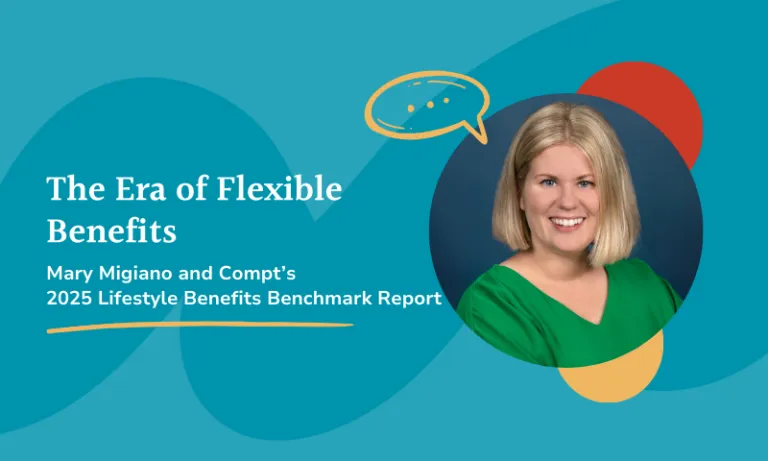Employees who face emergencies involving a loved one shouldn’t have to choose between their job and their family.
That’s why many employers offer compassionate leave, allowing employees to take time off work for urgent personal matters.
What is compassionate leave?
Compassionate leave is a leave of absence granted to an employee in response to a personal situation that is sensitive or upsetting. This could include:
- Life-threatening illness or injury, for either the employee or a family member
- Bereavement of a close family member or friend
- Family emergencies that require the employee’s care
- Last-minute childcare emergencies
- Being involved in a traumatic event
- Being a victim of a crime
Whether or not this type of leave is paid depends on the employer. Part-time employees typically don’t enjoy paid compassionate leave benefits, but many full-time employees do.
Compassionate Leave vs. Bereavement Leave
“Compassionate leave” and “bereavement leave” are sometimes used interchangeably -compassionate leave often comes up when a family member dies or in family emergencies.
The critical distinction here is that bereavement leave refers explicitly to situations where a close relative, child, or dependent dies. It also refers to instances of stillbirth after 24 weeks.
While bereavement leave typically entails taking time off work to attend a funeral or make arrangements, compassionate leave can also mean providing emotional or practical support during a difficult situation.
The Biggest Challenge With Compassionate Leave
For the employer, compassionate leave is a double-edged sword:
- Giving an employee time off to deal with a severe emergency is the right thing to do.
- At the same time, compassionate leave can potentially disrupt current projects.
Unlike other types of leave, compassionate leave generally occurs with short (if any) notice. The employer may not know when the employee will return or what type of state they’ll be in when they do, so compassionate leave can lead to challenges.
Suppose a team member loses a loved one during a major client project. While other team members might be able to fill in while they take time off for the death, this situation still puts the company in a challenging position.
If the absent person needs additional time beyond what was initially expected, it is hard to accommodate at best and creates a culture of resentment at worst.
Compassionate leave is also very open-ended and it’s hard for employers to determine whether an employee’s request is pushing a boundary.
Legal Protections for Compassionate Leave Entitlement
UK law states employees can take time off for “an emergency involving a dependent.” Though there isn’t a set amount of annual leave a person can take, the law indicates that an employer may want tot talk privately with an employee if their performance suffers.
Laws also don’t specify whether employers pay for compassionate leave. However, they do mention one caveat: Employees are not granted compassionate leave for anything they could expect ahead of time.
For example, a worker could take time off to rush their child to the hospital after a medical emergency, but they would have to take another type of leave (e.g., parental leave) if they were taking the child to a pre-booked appointment at the same hospital to treat an illness.
Why offer employees paid compassionate leave?
The UK government defines compassionate leave as “paid or unpaid leave” that an employer may grant to their employee. Though employers are not required to pay employees for it, there are important reasons why they should consider doing so.
- Financial security. Paying an employee during a severe emergency can provide them with a sense of stability and security, helping them focus on providing care instead of worrying about their financial future.
- Employee health and wellbeing. Only 8% of UK workers take compassionate leave when they need to, and a huge part of that is their inability to forgo pay.
- Employee retention. Most employees (79%) believe compassionate leave laws aren’t definitive enough. Offering compassionate leave pay ensures that employees maintain their commitment to employment and are far more likely to return after the emergency.
- Supporting employee rights. Offering paid leave for emergencies sends a positive message to employees that you support them through difficult times, which creates an environment where they feel safe, supported, and respected.
In a sense, paid time to help employees deal with death or sick relatives is an ethical issue.
How to Create a Compassionate Leave Policy
Although many compassionate issues are covered by bereavement leave and other guidelines, compassionate leave policies ensure all the bases are covered when granting employees time away from work for urgent personal matters.
When creating a compassionate leave policy, employers should clearly outline the circumstances for eligibility.
Follow these steps to create a compassionate leave policy:
1. Define compassionate leave entitlement qualifications.
Who qualifies for compassionate leave within your company?
Part-time employees are usually not entitled to compassionate leave, while full-time employees can receive a certain number of days off.
2. Outline the circumstances covered by compassionate leave.
In your employment contract, outline instances where an employee could take compassionate leave, such as:
- Covered scenarios (e.g., acute and severe family illnesses, death in the family, or other personal emergencies)
- How much time off is allowed (the average company offers five days of leave per instance)
- Alternative coverage for bereavement leave, sick leave, and other types of leave
3. Choose between unpaid and paid leave.
Paid compassionate leave is generally the best option, as it shows genuine concern for employees’ wellbeing. However, a company may offer unpaid time to its contract workforce as an added benefit.
4. Specify whether any proof is required.
Sometimes, the employer may require written evidence from a medical professional or other official that an employee needs to take compassionate leave before granting their request. This could be a signed form or a doctor’s note.
5. Consider flexible working options upon return.
Some employers offer flexible work options upon the employee’s return to acknowledge the disruption to their work and allow them to focus on other areas of life that may be affected by the emergency.
This could include:
- Temporary work-from-home options
- Reduced hours for a short period
- A change in job duties
6. Consider leave management software.
Maintaining leave management policy documents, tracking employee leave, and ensuring compliance is a tall order! Platforms like Cocoon can help People teams automate the complexities of leave management.
Final Thoughts
Recognizing that personal emergencies extend beyond bereavement, companies can demonstrate their commitment to employee wellbeing and enhance their organizational culture. Embracing compassionate leave acknowledges employees’ diverse needs and sends a powerful message that their personal lives matter, leading to a more empathetic and connected workplace environment.
Click here to learn how forward-thinking companies that care about employee wellbeing use Compt for lifestyle benefits.





